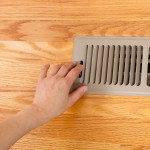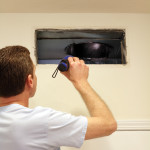Benefits of Sealed Ducts
- Environmental: Fossil fuels are used by power plants to generate energy for HVAC systems. Fixing a leak will reduce energy use and indirectly decrease a power plant’s fossil fuel consumption and lower CO2 emissions—the main cause of global warming.
- Health & Safety: Household appliances emit carbon monoxide and other harmful gases. When a furnace has a leaky duct, carbon monoxide is drawn back into the home, a process called backdrafting. If you suspect that gas is not being properly vented outside, and your smoke and carbon monoxide alarm goes off, call 911 or the fire department. Sealing leaky ducts can also prevent dust particulates from circulating that can aggravate asthma and other allergies.
- Comfort: Ducts allow a room to heat up or cool down properly. Feeling a bracing chill even with the furnace on? It may be leaky ductwork or the system is not properly insulated. Fixing the duct will provide relief.
- Savings: Leaky ducts can result in a 20% loss of energy in your home. The cost to fix the leak can often be recouped within a short time after the repair
What Exactly is a Duct System? A duct system, or ductwork, is a series of branching tubes, typically metal, or aluminum, but sometimes fiberglass, which branch out from your Heating, Ventilation, Air, and Conditioning (HVAC) system. When you turn on your thermostat, a forced-air furnace blasts warm or cool air into your home through a series of vents, usually one in each room. Ducts leaks from holes, tears, or poorly attached duct sections or lack of insulation can account for a 20% energy loss in a home. Problems identifying a loose or leaky duct, however, can be exacerbated because ducts are often found in hard-to-reach places like behind walls, attics or in a crawlspace. Therefore, detecting the source of a leak yourself may be difficult.
Do It Yourself? Those who enjoy embarking on DIY home projects over the holidays can certainly do minor duct repairs such as patching a small leak with mastic, a very strong adhesive. A duct can also be sealed with an aerosol technology. This technology is safe, has no off-gassing and lasts 10-plus years; it works especially well when a leak is hard to find, such as one between a floor, a wall or a ceiling. For most situations a combination of mastic and/or an aerosol sealant should work effectively. But in these situations, that is, ones in which a leak may be hidden, it makes better sense to get your home evaluated by a professional. Read More.
 The Hidden Secrets of Ducts
The Hidden Secrets of Ducts